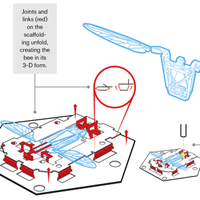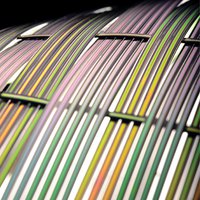Nanotechnology & materials
Baile Zhang
A new type of invisibility cloak made from a common material can work with larger objects <br>
Illustration by John Ritter

Global
Pratheev Sreetharan
Mass-producible tiny machines snap into place like objects in a pop-up book <br>

Global
Zheng Wang
Slowing light to help chips cope with optical data

Europe
Gerasimos Konstantatos
Nanomaterials for ultrasensitive infrared cameras resolution

Global
Joyce Poon
A tiny roller coaster for light could help keep data centers cool
